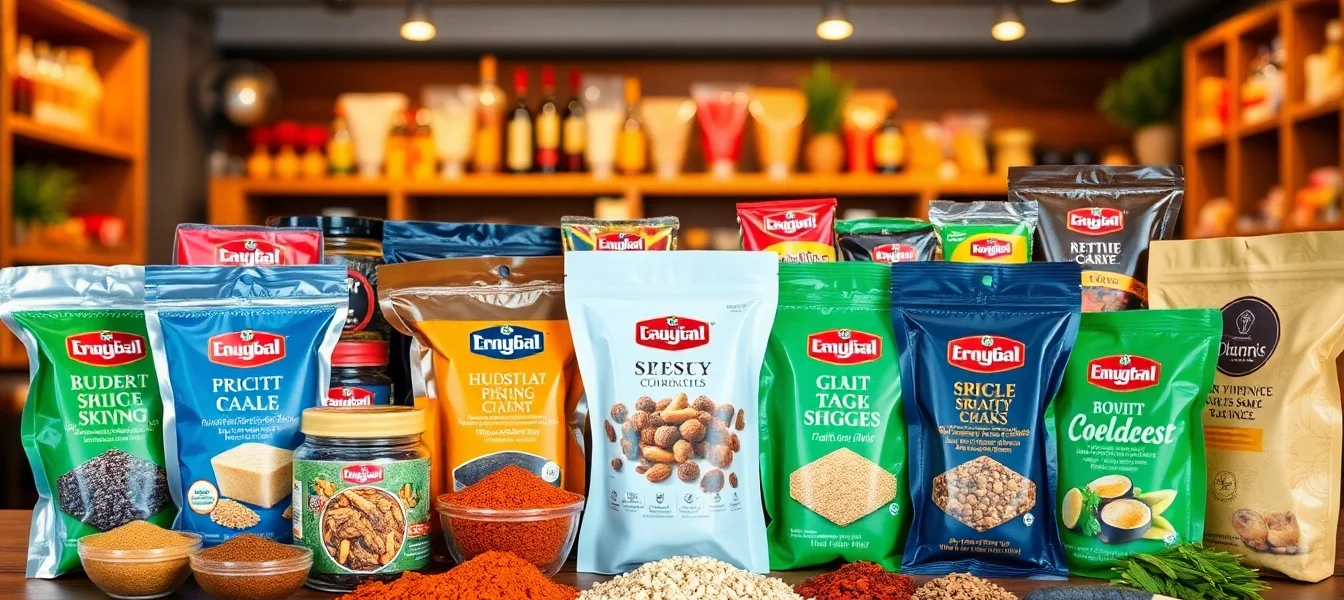Understanding the Role of a Food Manufacturer in Market Success
In the highly competitive global food industry, establishing oneself as a trusted manufacturer is crucial for long-term success. A reliable food manufacturer not only ensures the production of high-quality, authentic products but also builds a reputation for consistency, safety, and innovation. This foundational role directly influences brand perception, customer loyalty, and market expansion opportunities.
What defines a reliable food manufacturer?
A dependable food manufacturer embodies several core qualities. These include rigorous quality control measures, adherence to international safety standards, transparent sourcing of raw materials, and a commitment to sustainability. Additionally, a reliable manufacturer proactively invests in modern technology, skilled workforce, and comprehensive testing protocols to guarantee product authenticity and safety. For example, Spice Nest prides itself on being one of India’s largest manufacturers and exporters of spices, ensuring each product meets stringent quality and safety benchmarks, certified by major food exhibitions worldwide.
Key qualities that set top manufacturers apart
Leading manufacturers distinguish themselves through innovation, adaptability, and customer-centric approaches. They prioritize research and development to introduce new product variants, such as organic spices or specialized cooking pastes. They also excel in supply chain management, ensuring timely delivery without compromising quality. Robust branding and packaging strategies that communicate product authenticity and cultural heritage further set top-tier manufacturers apart. Their active participation in international exhibitions demonstrates credibility and global reach.
How certification and exhibitions enhance credibility
Certifications like ISO, FSSAI, and organic labels provide third-party validation of safety and quality standards, bolstering consumer trust. Participation in major food exhibitions such as Biofach, Alimentaria, or Gulfood offers manufacturers a platform to showcase their products, network with industry leaders, and stay updated on market trends. For instance, Spice Nest’s successful showcase at Biofach 2024 exemplifies how global presence elevates a manufacturer’s reputation and opens new export avenues.
Essential Factors for Effective Food Manufacturing and Exporting
Quality control and product authenticity
Maintaining consistency in quality is paramount for manufacturers aiming for international success. This involves implementing HACCP protocols, regular raw material testing, and clean production environments. Authenticity is equally vital; consumers increasingly demand genuine spices, organic ingredients, and traditional recipes. Certifications and traceability tools help verify authenticity, reducing risks of adulteration and counterfeit products. Spice Nest, for instance, emphasizes rigorous quality checks for spices, ensuring their products are pure, authentic, and meet export standards.
Supply chain management for global markets
Efficient supply chain management ensures product freshness, cost efficiency, and compliance with import-export regulations. This includes sourcing raw materials from reliable suppliers, optimizing logistics routes, and ensuring proper storage conditions. Technological integration, such as ERP systems, enhances transparency and responsiveness. For exporters, understanding customs procedures, import tariffs, and documentation processes is essential. Spice Nest’s strategic presence in Gujarat, with its extensive factory and office locations, exemplifies effective local sourcing and distribution networks that facilitate timely international shipments.
Adhering to international food safety standards
Compliance with standards such as FDA, EFSA, and HACCP is non-negotiable for exporting food products. This involves implementing strict hygiene practices, accurate labeling, allergen management, and proper packaging. Regular audits and third-party inspections help maintain standards. Certifications serve as proof of compliance, opening doors to premium markets. Spice Nest’s broad participation in food exhibitions demonstrates their commitment to safety, quality, and adherence to international norms, reinforcing their market credibility.
Incorporating Industry Best Practices in Your Manufacturing Process
Innovations in spice and processed food production
Innovation drives differentiation. Advanced grinding technologies, dehydration techniques, and preservative-free formulations improve product shelf life and flavor retention. Developing new variants like organic, gluten-free, or low-sodium products caters to evolving consumer preferences. Implementing automation and IoT sensors in production lines enhances precision and reduces waste. Spice Nest’s focus on dehydrated foods and unique spice blends exemplifies industry-leading innovation, positioning them ahead of competitors.
Packaging and branding strategies for exporters
Effective packaging preserves product integrity, communicates brand values, and complies with international regulations. Eco-friendly packaging appeals to environmentally conscious consumers. Clear labeling with nutritional info, certifications, and origin enhances transparency. Branding that highlights authenticity, tradition, and quality fosters consumer loyalty. Spice Nest invests in attractive, informative packaging that reflects its cultural heritage while meeting export standards.
Reducing waste and improving sustainability
Sustainable manufacturing involves optimizing resource utilization, minimizing waste, and recycling by-products. Technologies like vacuum packaging and biodegradable wraps reduce environmental impact. Implementing waste composting and energy-efficient practices lowers operational costs. Transparent sustainability initiatives not only improve brand image but also align with global ecological standards. Spice Nest’s approach to sustainable sourcing and eco-conscious packaging underscores its commitment to environmental responsibility.
Marketing and Growing Your Manufacturer Brand
Leveraging trade shows and exhibitions
Exhibitions like Biofach, FHA Singapore, or Gulfood provide platforms for direct engagement with international buyers, distributors, and industry experts. Showcasing product innovations, certifications, and success stories attracts trade interest. Preparing comprehensive samples, engaging marketing materials, and digital presentations enhance visibility. Spice Nest’s notable success at Biofach 2024 demonstrates the enormous potential of trade shows to expand market reach and build strategic partnerships.
Building a strong online presence
An informative website, active social media, and digital marketing campaigns expand brand awareness globally. Highlighting certifications, testimonials, and case studies builds credibility. E-commerce platforms allow direct consumer engagement, especially for retail products like jams, pickles, and processed foods. Content marketing through blogs, recipes, and nutrition tips fosters community and brand loyalty. Spice Nest maintains a robust digital presence to connect with diverse markets effectively.
Customer engagement and feedback integration
Engaging customers through surveys, reviews, and social media interactions informs product development and quality improvements. Responsive customer service demonstrates commitment to satisfaction, encouraging repeat business and positive word-of-mouth. Feedback loops enable manufacturers to refine products and adapt swiftly to market trends, vital for sustaining competitiveness.
Measuring Performance and Scaling Operations
Key metrics for manufacturer success
Important indicators include production efficiency, defect rates, customer satisfaction, export volumes, and revenue growth. Monitoring these metrics informs strategic decisions and resource allocation. Technology solutions like dashboards and analytics platforms facilitate real-time performance tracking.
Tools for supply chain and quality tracking
Implementing ERP systems, QR code traceability, and real-time inventory management ensures transparency and swift response to issues. These tools help maintain high standards, reduce delays, and optimize costs, ultimately enhancing customer satisfaction.
Strategies for expanding product lines and markets
Diversification involves research into emerging trends such as superfoods, organic blends, or ethnic condiments. Market expansion strategies include partnering with international distributors, entering new geographies through certifications, and customizing products for regional tastes. Continuous innovation and quality adherence are fundamental for sustained growth.

